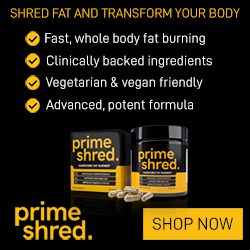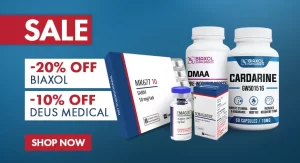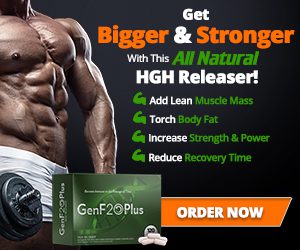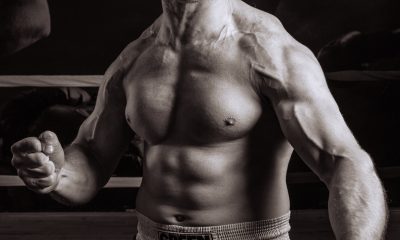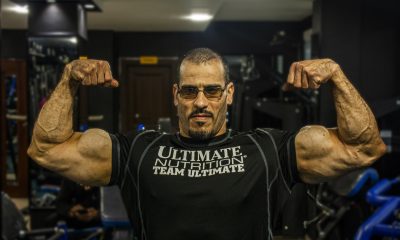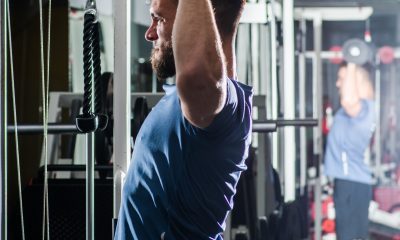Workout
How Bodybuilders Spent $10,000 on Home Gyms as the Covid Crisis Persists

Preparing for a bodybuilding competition takes an average of 16 weeks. That amount of time is enough under normal circumstances. Well, welcome to the new normal, where everything has been thrown into chaos. Bodybuilders are increasingly getting anxious as the Covid pandemic sinks deeper into every aspect of their lives. Not only are they lacking equipment to train with, but they are also not getting the right diet that befits a bodybuilder.
Bodybuilders and other fitness enthusiasts no longer have the luxury of walking to a nearby gym to train with their colleagues. Persistent lockdowns have confined most of them to their homes, where there is little or nothing to use for training. That is not to mention their special dietary needs, which have been reduced to a little more than an ordinary meal. For those bodybuilders who were training hard for upcoming competitions pre-Covid, months of hard training have been wiped out, and they have to start all over again. The worst thing about this madness is that we are unsure when it will end. There is wave after wave of this monster, and every subsequent wave proves deadlier than the previous ones. Luckily, the vaccine is here with us, thanks to the many hours put up by our scientists.
At-Home Training for Bodybuilders
When Covid-19 came knocking, many employers advised their staff to work from home to stop the virus from spreading. Although a bitter pill to swallow, many people quickly adjusted to it, and operations resumed, though a little slower. The same can’t be said for bodybuilders and other athletes. For people from other professions, all they needed was a laptop and a stable internet connection to perform their normal tasks. On the other hand, a bodybuilder will require a lot of equipment to mimic the normal gym. As expected, this equipment is costly and can’t just be found anywhere. Bodybuilders were forced to order their gear online because the lockdown was still in effect.
>> TRX ALL in ONE <<
However, what you order is not always what you get. In addition to being pricy, most bodybuilding equipment ordered online does not match the quality shown in advertisements. The other challenge is that the equipment requires a spacious room with the right conditions, such as ventilation, suitable for a workout. That is not to mention that setting up the equipment is another sweat-breaking task that might need more than two hands. However, since two is not a crowd, you can always call your training partner and get it rolling. Furthermore, cost-sharing can be a great way to reduce your spending on pricy gym equipment.
Realted Article:: 5 Home Gym Essentials To Build A Great Body
Costly Gear
Americans pay under $20 for a workout mat and over $3200 for a cardio machine. That should give you a clear picture of how much a fully equipped gym could cost. Bodybuilding, or fitness in general, is not like any other sport. Heavy investment in select equipment goes a long way in determining whether you will make it to the pro league when the lockdown is over. Unfortunately, many athletes didn’t expect the pandemic to last this long, and there is still no end. Fitness enthusiasts have been forced to dig deeper into their pockets to buy the equipment or improvise household items to supplement whatever equipment is available. Did you know you can use water containers for chest and arm workouts? I thought you should know.
>> VIGBODY Stationary Bike <<
It is important to note that the open spaces around cities and towns worldwide, such as parks, have provided excellent jogging sports. That has saved most bodybuilders from purchasing expensive equipment such as stationary bicycles. It has been estimated that health and fitness equipment has wrecked more than 2 billion dollars in the last year. That is double the usual 1 billion such equipment cost under normal circumstances. That only tells you one thing: people have moved gyms to their living rooms and other spaces. All this trouble is coming at a hefty price, and the figures keep rising.
Best-Selling Equipment
Even though these machines are costly, their sale has soared 140 percent more during the Covid period. Any bodybuilder will agree that this equipment plays a critical role in their training, and leaving it out is not a good idea. Whatever it takes to acquire a treadmill, bodybuilders are ready to spend hundreds, if not thousands, of dollars to put it in their homes.
>> NordicTrack <<
A good treadmill will cost anywhere between $1000 and $3000. That is huge, given that it is only one of the tens of equipment needed for full-body training. On the other hand, cardio machines come in many sizes and designs. You could get one for as little as $50, while complex ones could cost you a fortune. Lighter equipment is quite affordable and is no headache.
Bicycles
Sales from stationary bikes are off the chart, thanks to Covid-19. To develop strong legs, bodybuilders must do some cycling. However, a regular bike can also do the trick; many have one at home. Most people are running away from the boring stay-at-home routine that almost makes them go nuts. One of the best ways to escape it is by riding outdoors. As a result, the demand for bicycles has tripled over the last year. Moreover, the demand for cold-weather bicycle gear, such as outerwear and snowshoes, has dramatically risen.
Special Diets and Supplements for Bodybuilders
It is estimated that some bodybuilders spend up to $10,000 a month on supplements and fitness equipment. However, these items, more so special diets, have not been to come by. One bodybuilder has noted that he is starving since he can no longer access his supplements. So, even if you squeeze your budget and buy these items, you’ll be shocked to find that most are unavailable. That is understandable since travel restrictions have resulted in a shortage of goods and services.
>> Gold Standard Whey <<
Surprisingly, some athletes have invented creative ways of dealing with the shortage. For instance, bodybuilders are now preparing their meals in a way that matches the supplements they are missing. Preparing a proper meal might be an uphill task, but the tough gets going. Furthermore, the internet is buzzing with tutorials on how to prepare a standard diet for a bodybuilder.
Must Read:: Top 10 best Immune Boosting Supplements to buy in 2020
Fitness apps
Since they cannot physically meet their trainers and colleagues, many bodybuilders have found consolation in fitness applications. Consolidating gyms within one’s premises has caused downloads of such applications to soar. Because every cloud has a silver lining, companies that were about to be shoved into solvency by the pandemic have found comfort in applications. Furthermore, most fitness enthusiasts consider apps an excellent supplement for the at-home workout.
The apps have enabled bodybuilders to stream workouts from the internet in real time, and many have embraced this new trend. For example, an app like Home Workout – No Equipment has been downloaded more than 45 million times during the Covid period. That is more than twice the number of downloads in the previous year. GPS running and cycling app is another popular app with over 20 million downloads in the last year alone.
Related Article:: The 10 Best Fitness Apps to Download in 2021
App downloads are expected to soar even higher with no end to the pandemic. Although most fitness apps are free, companies offering the same are wrecking in millions of dollars from the downloads. It is estimated that mobile app downloads over the last six months have seen a 120 percent increase. If we don’t factor in other sports, bodybuilding, and fitness alone, they contribute to more than 50 percent of the downloads. Most bodybuilders included are not exercising at home because they’re preparing for a competition. After all, there is no one. Rather, they’re doing it because physical fitness plays a role in managing the virus if it ever lands on your body.
The Big Winners
Again, Covid-19 has come with a silver lining for retail gyms and fitness gear suppliers. With their sales skyrocketing and a virus mutating, it is undeniable that they will keep reaping big. Demand is outstripping supply, according to some equipment manufacturers. Transforming homes into classic gyms is probably a new idea every few have explored before. Now that bodybuilders have been forced to adapt to the new normal, chances are that there is no going back. I bet no one will dismantle their home gym once the pandemic ends. That is good news for the bodybuilding fraternity because they’ll be immune to unprecedented events like COVID-19. It is an eye-opener for athletes who have never considered diversifying their training. So, yes, bodybuilders are the other big winners.
Online fitness trainers are minting money from their streaming classes. One such strainer, Deborah Hirsch, has stated that she has been doing 35 online fitness classes a week since the pandemic began and physical gyms shut down. Although such classes are not paid for directly, trainers earn a lot from the massive traffic.
The Biggest Casualties for Bodybuilders
The health club industry has taken a big hit from the ongoing pandemic. At-home training has cut off revenues amounting to billions of dollars. An exclusive consumer survey conducted by an investment bank in New York revealed that the sector could lose more than $10 billion annually if the pandemic is not managed effectively. The worst part is that fitness clubs and gyms will take longer to recover, even if the pandemic were to be stopped. As of March of this year, about 35% of gym-goers had canceled their membership with their respective clubs. Where do those people go? Did they stop exercising altogether? No. They have set up gyms at home amid the biting economic situation. As a result, more than 40,000 gyms and clubs have shut down in the United States alone.
No End in Sight
It is projected that Covid-19 will be around for a couple more years. Although we have achieved a huge milestone regarding the vaccine, the virus keeps mutating, and every new strain is deadlier. So, what happens to bodybuilders whose biggest motivation to train is competition? Unknown to many, bodybuilding is a contact sport, meaning the risk of spreading the virus during competition is high. That means we are ruling out the possibility of returning to competition soon. You are not going to put training on hold. Neither are you going to stop steroid cycles.
Every bodybuilder’s best chance of remaining in form is by investing in their training. That means spending on equipment and diet. Most importantly, ensure you have a consistent flow of income to meet those needs. The good thing about investing in quality equipment is that they will give you many years of service. However, you must be prepared to pay more for good equipment because it is quite costly. For instance, benches cost about $300, while dumbbells cost $70-$200 a set. That is not to mention heavier equipment like cardio machines that could cost more than $3000.
Conclusion
For a bodybuilder, nothing is as heartbreaking as seeing your months of grueling training go to waste and have to start all over again. That is probably the motivation behind heavy spending on gym equipment during this lockdown period. Luckily, heavy investment in at-home training is bearing fruits. The only challenge is the lack of motivation and discipline when working out at home alone. However, tough times create tough people, which is the motivation every bodybuilder should have. It is only a matter of time before you fully adapt and come to love training from home.
Bodybuilding
Top Video Games for Bodybuilders in 2025

There are several video games that can be great for bodybuilders, combining fitness and fun! Here are some of the best options:
Ring Fit Adventure (Nintendo Switch)
The game uses the Ring-Con and Leg Strap to guide you through various exercises and adventures. It's a fun way to get a full-body workout while playing a game.
Fitness Boxing 2: VR Boxing Remastered (PlayStation VR)
It offers a full-body boxing workout with a variety of punches and combos. It's a great way to improve your fitness while enjoying a virtual boxing experience.
Must Read: Marvel-Inspired Training Clothing on Amazon
Just Dance 2024
This popular dance game gets you moving to the beat with a variety of songs and dance routines. It's a fun way to burn calories and improve your coordination.
Zumba Fitness
Burn It Off (Nintendo Wii): This game offers a fun and energetic Zumba workout, perfect for those who enjoy dancing and want to get a good cardio workout.
Yoga for Beginners
If you're looking for a more relaxing workout, yoga games can help improve flexibility and reduce stress. Many of these games offer guided yoga sessions that you can follow along with.
Gym Tycoon
This game lets you build and manage your own gym, complete with various workout equipment and fitness classes. It's a great way to learn about different exercises and how to create effective workout routines.
The Sims 4: Fitness Stuff Pack
This expansion pack for The Sims 4 adds fitness equipment and activities to the game, allowing you to improve your character's fitness and join the athlete career.
Grand Theft Auto: San Andreas
While not a traditional fitness game, this classic game includes bodybuilding activities that can help your character gain muscle and improve fitness.
Knockout Home Fitness (Nintendo Switch)
This game offers a variety of boxing workouts that can help improve your strength and endurance.
Gym Simulator 24 (PC)
In this simulation game, you can build and manage your own fitness empire, creating workout routines and managing gym equipment.
Let's Get Fit (Nintendo Switch)
This game focuses on pure workouts, allowing you to set programs and follow along with digital trainers for a customized fitness experience.
Beat Saber (VR)
A popular VR game where you slash blocks to the beat of the music, providing an intense full-body workout.
Synth Riders (PlayStation VR)
This game combines freestyle dance and fitness, offering high-tempo tracks and multiplayer modes for a fun and energetic workout.
Yoga Master (PlayStation)
Designed by professional yoga coaches, this game offers a variety of yoga lessons and poses to improve flexibility and reduce stress.
Les Mills Bodycombat (PlayStation VR)
A martial arts-inspired workout game with a range of workout plans and coaching to keep you motivated.
OhShape Ultimate (PlayStation VR)
This game provides a full-body cardio workout with six sessions and two difficulty levels, designed to engage every part of your body.
These games offer a mix of cardio, strength, and flexibility workouts, making them great additions to your fitness routine.
Related Article: Supplemental Breast Milk for Bodybuilders
Beginners
14 Morning Run Safety Tips for Bodybuilding and Fitness

Morning Run can be a refreshing way to start the day, but it comes with its own set of challenges and safety concerns. For bodybuilders, who often have rigorous training schedules, it's crucial to take extra precautions to ensure a safe and effective workout. Here are some essential safety tips for bodybuilders who run in the wee hours of the morning:
Must Read: Here Is How to Know Your MRV
1. Plan Your Morning Run Route
Choose a well-lit, familiar route that is safe and free from heavy traffic. Avoid secluded areas and opt for routes with plenty of pedestrian traffic. If possible, run in parks or designated running trails.
2. Wear Reflective Gear
Visibility is key when running in the dark. Wear reflective clothing, shoes, and accessories to ensure that you are seen by drivers and other pedestrians. A headlamp or flashlight can also help you see the path ahead.
3. Inform Someone Before a Morning Run
Always let someone know your running route and expected return time. This way, if something goes wrong, someone will be aware and can alert authorities if necessary.
4. Carry Identification During Morning Run
Wear an ID bracelet or carry identification in your pocket. Include your name, emergency contact information, and any medical conditions or allergies. This information can be crucial in case of an emergency.
5. Stay Alert
Keep your senses sharp and stay aware of your surroundings. Avoid wearing headphones or earbuds, as they can distract you from potential dangers. Instead, listen to the sounds around you and be prepared to react quickly.
6. Run Against Traffic
When running on roads, always run against the direction of traffic. This allows you to see oncoming vehicles and gives you more time to react if needed.
7. Vary Your Routine
Don't run the same route at the same time every day. Varying your route and schedule can help prevent potential attackers from predicting your movements.
8. Carry a Personal Safety Device
Consider carrying a personal safety device, such as a whistle or pepper spray. These items can help you defend yourself if you encounter a threat.
9. Stay Hydrated
Even though it's early in the morning, your body still needs hydration. Drink water before and after your run, and consider carrying a small water bottle with you.
10. Warm Up Properly for Morning Run
Before you start running, take a few minutes to warm up. Stretching and light exercises can help prevent injuries and prepare your muscles for the workout ahead.
11. Dress Appropriately
Wear moisture-wicking clothing to keep cool and dry. Layering is essential, especially in colder months, so you can adjust your clothing as you warm up.
12. Check the Weather
Before heading out, check the weather forecast. Avoid running in extreme conditions, such as heavy rain, thunderstorms, or extreme heat. If conditions are unsafe, consider an indoor workout instead.
13. Trust Your Instincts
If something doesn't feel right, trust your instincts and find a safer location. Your safety is the top priority, and it's better to be cautious than sorry.
14. Post-Run Routine
After your run, take time to cool down and stretch. This helps reduce muscle soreness and improves flexibility. Also, refuel with a healthy breakfast to replenish your energy levels.
Read Also: 10 Best Powerlifting Steroid Cycles
Analysing Your Morning Run Route
Running in unsafe areas can put you at risk, especially in the early morning when visibility is low. Here are some routes to avoid:
Secluded or Remote Areas
Avoid running in places that are far from help, such as remote trails or rural roads. These areas can be dangerous if you encounter wildlife or if you get injured and no one is around to help.
Check High-Crime Areas Before Morning Run
Stick to well-lit, populated areas and avoid neighborhoods with high crime rates. If you're unsure about the safety of an area, it's best to find an alternative route.
Avoid Unlit Roads During Morning Run
Running on roads without streetlights can be hazardous, especially if there's no sidewalk. Cars might not see you, and it's harder to see potential hazards on the road.
Busy Highways or Interstates
Avoid running on or near highways where traffic is fast-moving and there's little room for pedestrians. The noise and exhaust can also be harmful.
Construction Zones
Be cautious around areas with ongoing construction. There might be debris, uneven surfaces, and heavy machinery that can pose risks.
Blind Curves and Hills
Routes with sharp turns or steep hills can be dangerous because you can't see oncoming traffic. It's safer to choose routes with good visibility.
Areas with Poor Drainage Aren't Safe for Morning Run
Avoid routes that are prone to flooding or have poor drainage. Wet, slippery surfaces can lead to falls and injuries.
Unfamiliar Trails
Stick to trails you know well. Unfamiliar trails can be tricky to navigate, and you might get lost or encounter unexpected obstacles.
Overall
By following our morning run safety tips, you enjoy the benefits while minimizing the risks. Remember, safety should always come first, and taking these precautions can help ensure a safe and enjoyable workout experience.
Related Article: How to Regulate Your Food Quantity
Bodybuilding
Primal Movements: Our Ultimate Guide for Maximum Results
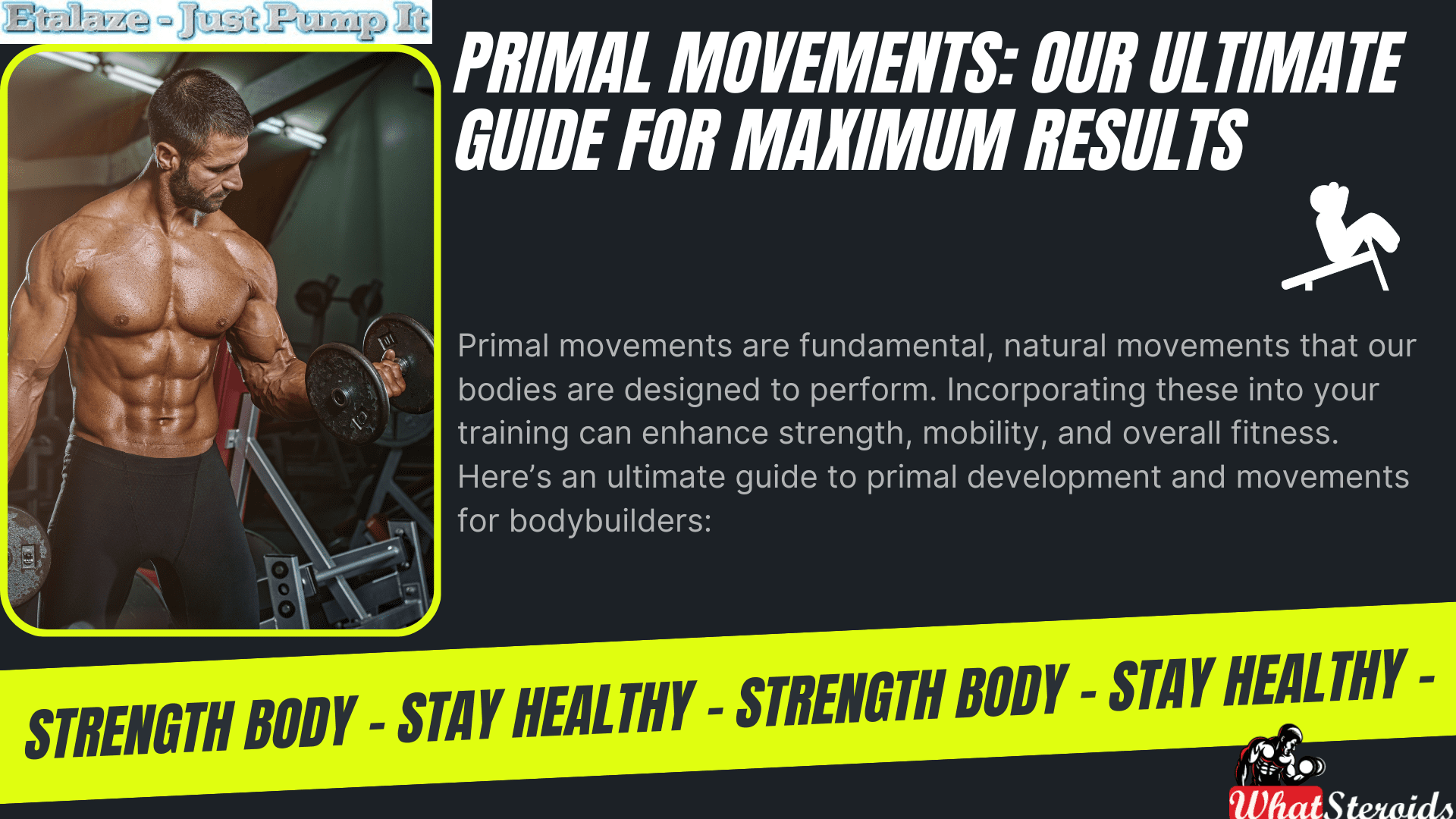
Primal movements are fundamental, natural movements that our bodies are designed to perform. Incorporating these into your training can enhance strength, mobility, and overall fitness. Here’s an ultimate guide to primal development and movements for bodybuilders:
 Buy Cut Long 300 by Dragon Pharma
Buy Cut Long 300 by Dragon Pharma
Understanding Primal Movements
Primal movements are basic, functional movements that mimic the natural actions humans have performed for thousands of years. These movements are essential for developing a strong, balanced, and resilient body. They can be categorized into seven primary patterns:
Related Article: How Much Do You Know About B-AET? A Fat Burner You’ve Been Missing
- Push
- Pull
- Squat
- Lunge
- Hinge
- Rotate
- Gait (Locomotion)
The Seven Primal Movement Patterns
Push
Description: Involves moving a weight or resistance away from your body.
Examples: Push-ups, bench press, overhead press.
Muscles Worked: Chest, shoulders, triceps.
Pull
Description: Involves drawing a weight or resistance towards your body.
Examples: Pull-ups, rows, bicep curls.
Muscles Worked: Back, biceps, forearms.
Squat
Description: A fundamental lower-body movement where you lower your hips from a standing position and then stand back up.
Examples: Bodyweight squats, barbell squats, goblet squats.
Muscles Worked: Quadriceps, hamstrings, glutes, calves.
Lunge
Description: A single-leg movement that involves stepping forward, backward, or to the side and lowering your hips.
Examples: Forward lunges, reverse lunges, lateral lunges.
Muscles Worked: Quadriceps, hamstrings, glutes, calves.
Hinge
Description: Involves bending at the hips while keeping a neutral spine.
Examples: Deadlifts, kettlebell swings, hip thrusts.
Muscles Worked: Hamstrings, glutes, lower back.
Rotate
Description: Involves twisting or rotating the torso.
Examples: Russian twists, woodchoppers, cable rotations.
Muscles Worked: Obliques, abdominals, lower back.
Gait (Locomotion)
Description: Involves movements that propel the body forward.
Examples: Walking, running, crawling, bear crawls.
Muscles Worked: Full body, with emphasis on legs and core.
Benefits of Primal Movements
Functional Strength: Primal movements enhance your ability to perform everyday tasks efficiently and safely.
Improved Mobility: These movements promote flexibility and range of motion, reducing the risk of injury.
Balanced Development: By working multiple muscle groups, primal movements ensure balanced muscle development.
Core Stability: Many primal movements engage the core, improving overall stability and strength.
Increased Caloric Burn: Compound movements like these burn more calories, aiding in fat loss and conditioning.
Incorporating Primal Movements into Your Training
Warm-Up: Start with dynamic stretches and light cardio to prepare your body.
Compound Exercises: Focus on compound exercises that incorporate multiple primal movements.
Progressive Overload: Gradually increase the weight or resistance to continue making gains.
Variety: Mix up your routine to prevent plateaus and keep your workouts interesting.
Recovery: Ensure adequate rest and recovery to allow your muscles to repair and grow.
Sample Primal Movement Workout
Warm-Up: 5-10 minutes of light cardio and dynamic stretching.
Workout:
Push: 3 sets of 10-12 reps of push-ups or bench press.
Pull: 3 sets of 10-12 reps of pull-ups or rows.
Squat: 3 sets of 10-12 reps of bodyweight or barbell squats.
Lunge: 3 sets of 10-12 reps per leg of forward or reverse lunges.
Hinge: 3 sets of 10-12 reps of deadlifts or kettlebell swings.
Rotate: 3 sets of 15-20 reps of Russian twists or cable rotations.
Gait: 3 sets of 30-60 seconds of bear crawls or sprints.
Cool-Down: 5-10 minutes of static stretching and deep breathing exercises.
1. Warm-Up and Mobility Drills
Start your workout with primal movement-based warm-ups to prepare your body. For example:
- Dynamic stretches: Incorporate lunges with a twist, leg swings, and arm circles.
- Mobility drills: Include exercises like hip circles, cat-cow stretches, and thoracic rotations.
2. Compound Exercises
Add primal movements as the core of your workout. Here’s how you can structure it:
- Push Day: Combine bench presses with push-ups.
- Pull Day: Mix pull-ups with rows.
- Leg Day: Integrate squats and lunges with deadlifts.
3. Supersets and Circuits
Create supersets or circuits that include primal movements:
- Superset Example: Pair squats with pull-ups or push-ups with lunges.
- Circuit Example: Rotate through exercises like kettlebell swings, bear crawls, and Russian twists with minimal rest.
4. Functional Training Days
Dedicate one or two days a week to functional training focused on primal movements:
Sample Functional Workout
-
- Warm-Up: 5 minutes of dynamic stretching.
- Circuit: 3 rounds of:
- 10 push-ups
- 10 pull-ups
- 15 squats
- 10 lunges per leg
- 15 kettlebell swings
- 20 Russian twists
- 30 seconds of bear crawls
- Cool-Down: 5 minutes of static stretching.
5. Active Recovery
Use primal movements on active recovery days to promote mobility and flexibility:
- Activities: Light yoga, walking, or gentle bodyweight exercises like lunges and squats.
6. Progressive Overload
Gradually increase the intensity of primal movements by adding weights or resistance bands:
- Example: Start with bodyweight squats, then progress to goblet squats, and eventually barbell squats.
7. Listen to Your Body
Pay attention to how your body responds to these movements and adjust accordingly:
- Modify: If a movement feels too challenging, modify it to suit your fitness level.
- Rest: Ensure you’re getting adequate rest and recovery to prevent overtraining.
Read More: Cellular Alchemy to Restore Testosterone Levels
Sample Weekly Routine for Primal Movements
Monday: Push Day
- Bench Press
- Push-Ups
- Overhead Press
Tuesday: Pull Day
- Pull-Ups
- Rows
- Bicep Curls
Wednesday: Leg Day
- Squats
- Lunges
- Deadlifts
Thursday: Functional Training
- Circuit of primal movements (as outlined above)
Friday: Active Recovery
- Light yoga or walking
Saturday: Full-Body Workout
- Combination of push, pull, squat, and hinge movements
Sunday: Rest Day
By incorporating these primal movements, you’ll enhance your functional strength, mobility, and overall fitness. If you have any specific goals or need further customization, feel free to ask! Happy training.
For optimal performance in primal movements before a bodybuilding competition, consider these supplements:
Pre-Workout Supplements: These can provide energy and enhance performance. Look for products containing creatine, nitric oxide stimulators, and caffeine.
Post-Workout Supplements: Essential for recovery, including protein powders, BCAAs (Branched-Chain Amino Acids), and multivitamins.
Fat Burners and Metabolizers: These can help in reducing body fat while maintaining muscle mass. Ingredients like green tea extract and L-carnitine are popular.
Adaptogens: Supplements like ashwagandha and rhodiola rosea can help manage stress and improve endurance.
Conlusion
Primal movements, which include squatting, lunging, hinging, twisting, walking, pushing, and pulling, benefit from a strong foundation of functional strength and mobility. Ensuring your body is well-nourished and recovered will help you perform these movements effectively.
Incorporating primal movements into your bodybuilding routine can lead to significant improvements in strength, mobility, and overall fitness. By focusing on these fundamental patterns, you can build a well-rounded, resilient body that performs well both in and out of the gym.
-

 Steroids2 years ago
Steroids2 years agoShavers and Other Body Grooming Equipment for Bodybuilders In 2023
-

 Steroids2 years ago
Steroids2 years agoChatGPT and Other Avenues to Find Great Bodybuilding Coaches
-

 Steroids2 years ago
Steroids2 years agoBest Oil Recommendations Before Competition for Subtle Shimmer
-

 Steroids2 years ago
Steroids2 years agoPowerlifting Vs Power Building: Find Out the Big Difference and When to Shift Between the Two
-

 Nutrition2 years ago
Nutrition2 years agoEverything Nutritional Food: What’s Too Much Or Too Little
-

 Bodybuilding Products1 year ago
Bodybuilding Products1 year agoTelmisartan In Bodybuilding: An Expert’s Advice
-

 Bodybuilding8 months ago
Bodybuilding8 months agoPrimal Movements: Our Ultimate Guide for Maximum Results
-

 Bodybuilding1 year ago
Bodybuilding1 year agoChia Seeds in A Bodybuilder’s Diet: An Expert’s Advice
-

 Anabolic Steroids10 months ago
Anabolic Steroids10 months agoJoint Stiffness: How to Manage It While on AAS
-

 Steroids1 year ago
Steroids1 year agoAnadrol Cycle: Benefits, Doses, Alternatives, etc.
-

 Anabolic Steroids1 year ago
Anabolic Steroids1 year agoLegality of Anabolic Steroids In Latin America
-

 Beginners2 years ago
Beginners2 years agoTren Cycle for Beginners
-

 Bodybuilding9 months ago
Bodybuilding9 months agoHow Effective is Bone Broth for Recovery?
-

 Steroids10 months ago
Steroids10 months agoOmnitope (Oxytocin)
-

 Bodybuilding1 year ago
Bodybuilding1 year agoHow Much Is Too Much Cardio? Understanding Heart Rate Zones
-

 Steroids9 months ago
Steroids9 months agoSleeping Positions for Effective Muscle Recovery
-

 Bodybuilding1 year ago
Bodybuilding1 year agoList of FDA-Approved Peptides
-

 Bodybuilding2 years ago
Bodybuilding2 years agoCompetition Prep Cycle for Pro Bodybuilders
-

 Bodybuilding1 year ago
Bodybuilding1 year agoCalorie Dumping: A Bodybuilder’s Guide
-

 Bodybuilding8 months ago
Bodybuilding8 months ago2nd Edition of Natural Bodybuilding Competition Facts
-

 Bodybuilding1 year ago
Bodybuilding1 year agoDemystifying Hypertrophy Training
-

 Bodybuilding9 months ago
Bodybuilding9 months agoAre Nootropics a Better Option to AAS?
-

 Anabolic Steroids12 months ago
Anabolic Steroids12 months agoHow Much Do You Know About B-AET? A Fat Burner You’ve Been Missing
-

 Steroids4 months ago
Steroids4 months agoOstarine For Beginners: The Ultimate Guide
-

 Product Reviews12 months ago
Product Reviews12 months agoTop Vitamins for Skin Health

